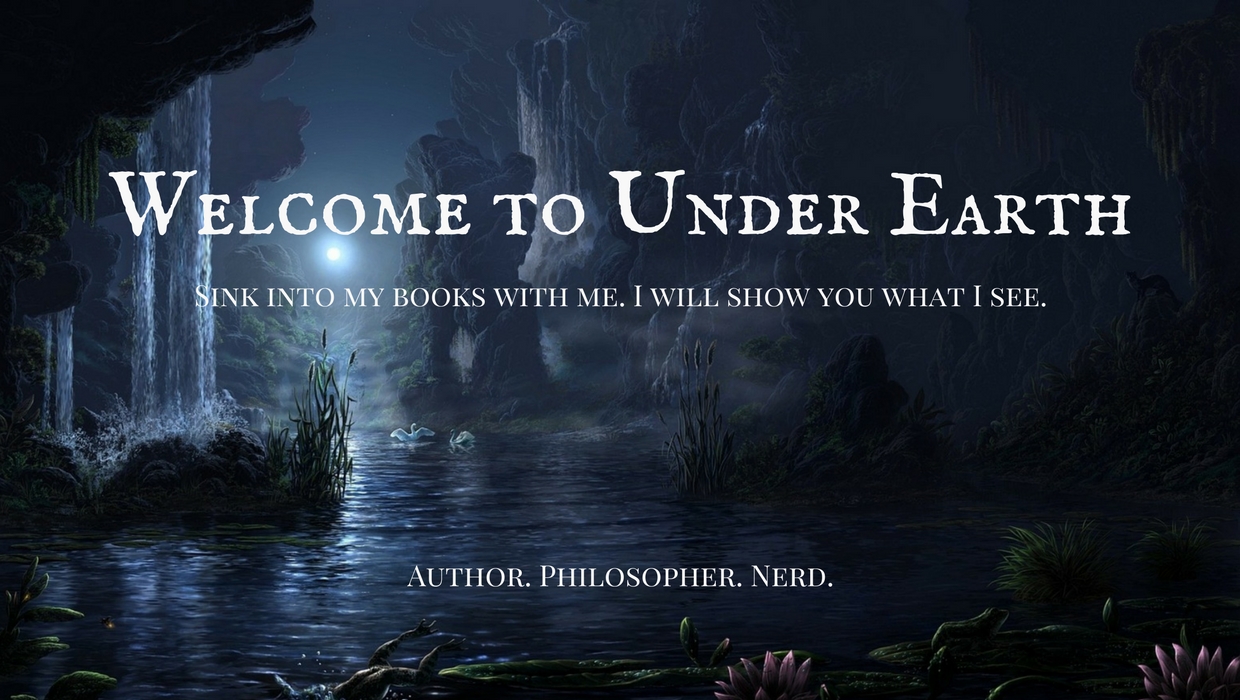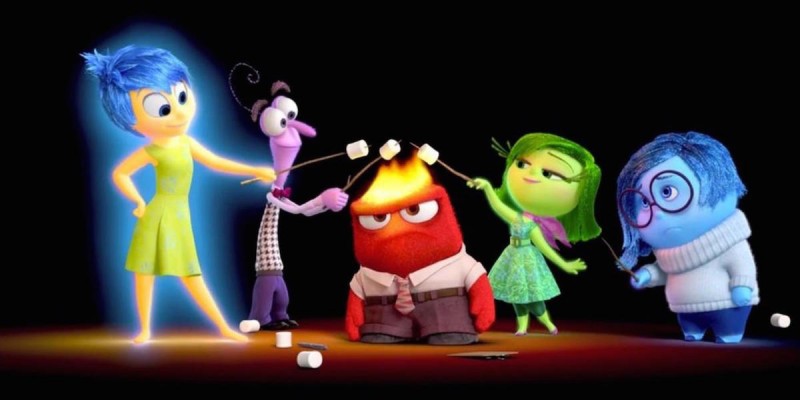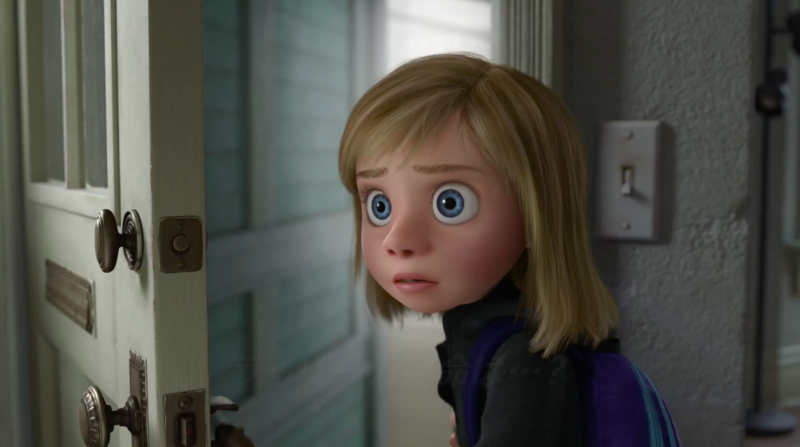I feel I need to balance the karma after my review of Frozen so here it is! My official review on Disney Pixar’s Inside Out.
I’ve read articles on this film, spoken to two therapists, read a psychologist’s view on this film and made a point of going to the theater for this little number. A feat I rarely do. Okay!
ANIMATION
I loved the animation. Simple, real, and wonderful in every way. I love going to CGI movies just to see how everyone has improved since the last film I saw. Once again, Pixar delivers. No one is odd shaped in this like you see in Up. Well, no humans anyway. And the seasons, colors, and scenery were bright and miserable where applicable. The orbs of memory were beautiful, magical things that captivated my imagination within the first two minutes of the film.
PLOT
The plot is really where I settled into this. The story was original! I can not say that enough. This is a story that has never been done before! It was refreshing.
Inside Out, in short, is about a wonderful family with a seemingly “perfect” daughter. Everything is bright, and happy until a catastrophe hits as all things wonderful and happy must have disorder for there to be a story.
I picked up on the gist of the film within moments, as you will too. It’s pretty straight forward. A child named Riley is born and with her, comes “Joy.” The little part of Riley that represents Riley’s happiness. They have a whopping thirty seconds together when “Sad” shows up and Riley cries. Meet the team!
The purple guy is “Fear” and the green girl is “Disgust.” The yellow bundle of joy is… well… Joy. Anger is the portrayed as red and often has fire sizzling atop his head. The blue emotion seen here is Sadness. These five emotions run and operate Riley within the emotional center of the brain called “Headquarters.”
The plot rolls for several minutes without any problems as we watch how memories—beautiful little orbs colored after the emotion used to make the memory—are made with one of the primary emotions. It isn’t long before we witness the “core memories.”
 The core memories. Wow! Such a wonderful way to explain such a complicated process. The core memories (Riley has five) make up the majority of Riley’s personality. Each core memory creates an “island” that summarizes that part of Riley.
The core memories. Wow! Such a wonderful way to explain such a complicated process. The core memories (Riley has five) make up the majority of Riley’s personality. Each core memory creates an “island” that summarizes that part of Riley.
Family Island, Goofball Island, Hockey Island, Friendship Island, Honesty Island.
To summarize the plot, you are watching a simple explanation on how a human being goes from having simple straightforward emotions, to a plethora and blend of complex emotions. That is it! It’s wonderful!
SPOILER ALERT
Catastrophe strikes when the family moves from Minnesota to San Francisco. In all the emotional upheaval of the move, chaos ensues in Riley’s head and the “core memories” are lost. Joy and Sad enter the memory bank of long term memory to reclaim the core memories. The longer the core memories are missing, the more “dissociated” Riley becomes and she starts to loose her Islands.
Riley loses her “Goofball Island,” and soon, the other islands follow, which raises the question we all had: Will “Family Island” be strong enough to sustain the break?
My favorite part of the film was “Riley’s Imaginary Boyfriend.” This was a device inside of Riley’s imagination that idealized her “perfect boyfriend.” This machine spat out prototypes of this random, nameless dream guy who proclaimed “I would die for Riley,” in an Ironman-is-better-than-Batman voice.
And I love the imaginary friend crying candy. I. Loved. That. Part.
Tangent:
So I had a dream last night. I was on an adventure with my husband and we needed an army. The solution? My husband—a huge Star Wars fan… as am I—shows up with an army of Riley’s boyfriends. “I got the idea from Attack of the Clones,” he explains while all of these boys keep declaring, “I would DIE for Riley.” I then proceeded to tell the clones, “We’re not here for Riley.”
“I would DIE for Riley.”
“No! We’re not—Oh, god.”
CHARACTERS
The characters. I just want to say, it was casting GENIUS that they hired comedian Lewis Black for the role of Anger! Seriously! GENIUS of epic proportions! I wasn’t fond of Disgust and am still debating on whether or not she really belonged in the top five emotions (Is disgust an emotion? I may have shut mine off. On the other hand, I am the moron who popped an unidentified berry in my mouth last summer and chewed before realizing I popped an unidentified berry in my mouth. They turned out to be Choke Berries and they are dreadfully bitter). Fear was wonderful, and Joy was… she had the potential of getting on your nerves now and then due to her bright and constantly sunny disposition. But Sad… Sad was my favorite. I loved Sad. She reminded me so much of Eyeore who I simply love.
“Think about something happy,” Joy says with her sustained pep. “Hey, remember that movie Dad took us to last week?”
“Yeah,” Sad sadly says. “I remember. The dog died. I love that movie.”
I think they watched Old Yeller.
Pixar doesn’t end there! We get a look into Mom’s head… and Dad’s head! I loved Dad’s head. We get a look into the boyfriend’s head. At the end credits, we even see inside the dog’s head and—my personal favorite—the cat’s head! LOVE IT!
This is truly, warm and fuzzy feel good film!
If you are a psychologist, I strongly recommend the film just because it is that interesting. Here’s an article for those of you who are interested in the connections between Inside Out and Psychology.
And here is a conversation with the Psychologists who worked on Inside Out.
Tangent:
I just read this in the first article provided above:
As if Riley’s mind trying to keep Sadness at bay wasn’t enough, Riley’s parents put an additional pressure on her, especially when her mother asks her to “keep smiling” for her dad. Essentially, Riley’s mom, without meaning to do so, communicates to Riley that being sad about the move was not ok and that she needs to pretend to be happy to support her father through this.
Wow! I did not see this at all! In fact, last night my husband and I paused the movie to scold the mother on this. You never—NEVER—dump a responsibility like this on a child. I was also very irate that neither parents—though they noticed Riley’s change in behavior—never stopped to ask, “What is wrong?” or “How are you feeling about all of this?” REALLY!?! I like to refer to this as “Disconnected Parenting.”
I’m just thrilled that the “poor parenting choice” was an intended addition to the plot.
ETHICS
What can I say. The ethics are great. I really want to discuss the psychology of this film! Holy Freud! This movie was like a little therapy session! Riley experiences a mild trauma. To cope, she dissociates. She grows numb, and shuts her emotions off. As the chaos progresses, so does Riley’s emotional venture down dissociation: a subject I am very familiar with. In this sense, I did find the movie predictable, BUT that is because I went through all of this with my therapist weeks prior and was able to psychoanalyze Riley’s decisions because they mirrored my own during my traumatic events. What does this mean? The writer’s did their psychological homework! Wahoo!
CONCLUSION
In conclusion I will be buying this film THE MOMENT it is available on Blu-Ray. Simply phenomenal.
Tangent:
My daughter is twelve as is Riley by the end of the film. My husband and I can not watch this film without stopping it to review (we’re that kind of people). Last night we got as far as the fight at the table.
Pause the movie.
Husband: “I don’t get this! I have the same problem with Emily right now. What is it!?”
I ponder in silence.
Husband: “I mean, I went through this… kind of, but it was with anger. Bouts of anger.”
Wife: “But not just anger.” I’ve known my husband since he was 12 and I never once saw anger from him.
Husband: “No. Anger and euphoric high.”
Wife: Sounds like bi-polar. “I think puberty is a form of bi-polar. In females it’s extreme euphoria with bouts of sadness and depression. Whereas with males it’s bouts of euphoria followed by bouts of anger and rage.”
Husband: “Interesting. That makes the most sense. Teenagers are “bi-polar”… I mean not literally, but… I’m going to have to give this some thought.
Until then we hadn’t noticed… Take a look at who’s driving the Mom and the Dad. Sadness leads the Mom and Anger leads the Dad.
Interesting.
Fun Thoughts
My husband pointed out that the long term memory halls, from bird’s eye view, look like the wrinkles on our brain.
The article I read regarding the psychological breakdown of Inside Out, lead me to the question: “Does Riley’s emotions control Riley, or are the events and people of Riley’s life controlling the emotions?” Prior to this article I believed the emotions were in charge. Now, I’m not so sure.


